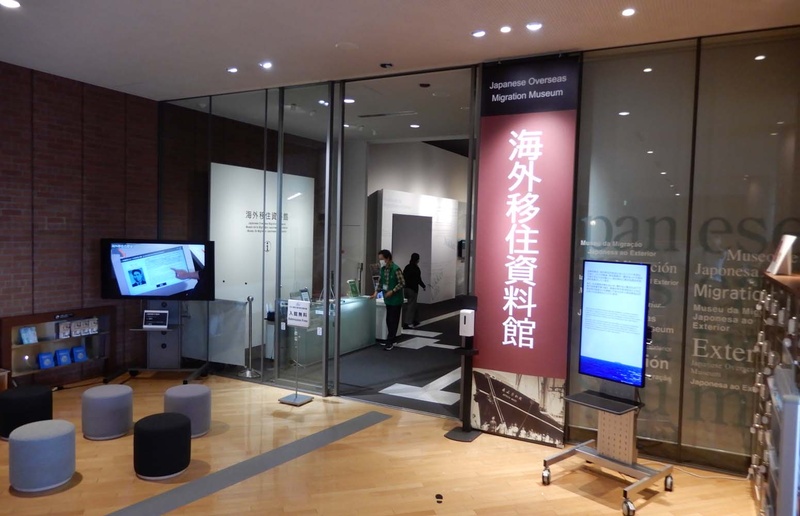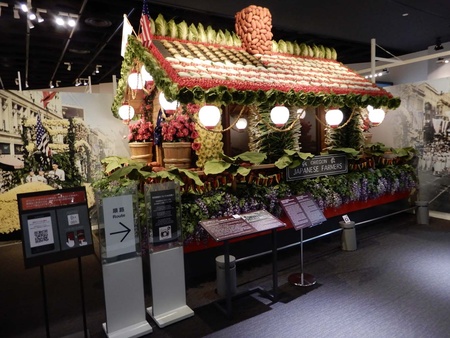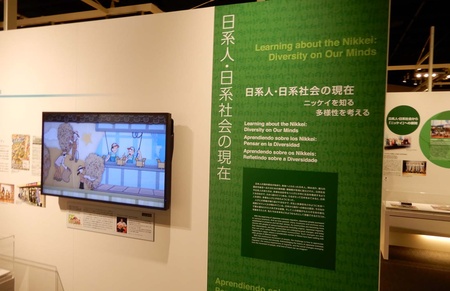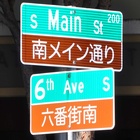A clue to understanding immigration and Nikkei
The JICA Yokohama Overseas Migration Museum, known as a unique institution that exhibits materials related to migration and immigration, has recently reopened after renovation.
The basic exhibits remain the same as before, introducing the history of immigrants who moved to North and South America from the Meiji era onwards, as well as the actual work and life conditions in their new homes. However, the use of images and videos has made the exhibits easier to understand, and they also encourage visitors to consider the expansion of the "Nikkei" community over the generations.
Yokohama Port is the largest base opened to the outside world after the country was opened up following the Meiji Restoration, and is a port with deep ties to the many Japanese who left from there for North and South America. There is Osanbashi Pier, which still serves as a terminal for international passenger ships, and to the west of there you can see the tourist spot of the Red Brick Warehouse, and further beyond that is the JICA Yokohama Center building, which houses the Overseas Migration Museum.
JICA (Japan International Cooperation Agency) describes itself as "an independent administrative institution established under the Japan International Cooperation Agency Act (2002) with the purpose of contributing to the promotion of international cooperation and the sound development of Japan and the international economy through contributing to the economic and social development or reconstruction, or economic stability, of developing countries and other regions."
JICA's predecessor, the Japan International Cooperation Agency, was primarily involved in migration projects to Central and South America after the war, and JICA also includes "support for overseas migrants and Japanese descendants" among its main activities.
One of the projects that embodied this is the Overseas Migration Museum, which was established here in 2002 when the then JICA Yokohama International Center opened, due to Yokohama's deep ties to overseas migration. Its themes include the history of Japanese overseas migration, mainly to North and South America, and the current state of Japanese immigrants and Japanese-Brazilians.
As the surrounding area becomes more lively every year with the neighboring Minato Mirai district, the Red Brick Warehouse, World Porters with its many restaurants and shops, and the recently opened Yokohama Hammerhead, the number of visitors to the Overseas Migration Museum is also increasing.
Easy to understand and friendly
Admission to the museum, which occupies the second floor of the building, is free. As soon as you pass through the entrance, you will see the float decorated with vegetables, just like in the past. It is a replica of the float that was used by Japanese who immigrated to Portland, Oregon, USA, to participate in the local Rose Festival in 1920 (Taisho 9).
Let's look around the museum using the guide map (1-14 corners) in "News from the Overseas Migration Museum" (No. 57). Starting from the floats (1), follow the route and you will first come to (2) "Map of Emigrants by Prefecture," followed by (3) "Map of World Migration." This shows which regions of Japan Japanese people migrated from, where in the world they went, and when. (4) "Paths to Overseas Travel" explains how people migrated before the war, including through labor contracts.
In the "Video Testimony Corner" on a nearby floor, you can listen to the voices of some immigrants as they talk about their experiences. (5) recreates the pioneering scene of the Aliança settlement in Brazil. Visitors can virtually experience the pioneers of that time cutting down giant trees.
(6) is a new section called "Brides Emigrating Overseas." Many Japanese women crossed the ocean without knowing why, in order to marry Japanese men who had already emigrated. This article summarizes the women who emigrated as "brides."
During the war, Japanese Americans, mainly living in states on the West Coast, were forced to leave their homes and forced into internment camps. This included second-generation Japanese Americans born in the United States. After the war, Japanese Americans launched the "Redress Movement" to demand an apology and compensation from the government for this internment policy (7), which has been newly added to this section about the movement.
The giant screen
(8) is about the aid supplies sent from overseas to Japan after the war and the aid from overseas Japanese communities. (9) explains the history of overseas migration chronologically, touching on life in internment camps in the United States during the war, the Japanese troops who went to the battlefield, and the confusion that arose among Japanese people in Brazil immediately after the defeat.
(10) displays the belongings that immigrants brought with them from Japan. (11) tells the story of the migration to Paraguay in South America on three huge screens. You can see the process of the jungle being cleared to become farmland and the settlement developing into a town. Powerful images also show the current state of the Iguazu settlement. (12) displays a diorama model of the Iguazu settlement, which you can actually touch.
In the Japanese settlement of Tome-Açu in northern Brazil, agroforestry, a combination of agriculture and forestry, is practiced. This is shown in the six-minute video "Agroforestry: Agriculture that Creates Forests - Coexistence with the Amazon Rainforest" (13).
Finally, (14) is an exhibit that makes you think about what "Japanese" means and what "Nikkei" means, mainly through the transition of the Japanese community in Brazil. It also touches on the expansion of the Japanese community in Japan.
In addition, there is an experiential learning corner and, as in the past, an exhibition that recreates the life of Japanese-Americans in their homes. In addition, the special exhibition room is scheduled to hold exhibitions based on specific themes several times a year.
On the upper floor of the Overseas Migration Museum, there is a restaurant called Port Terrace Cafe, which is open to the public. There is outdoor seating and you can enjoy a view of the Red Brick Warehouse and the Bay Bridge. It's a great place to take a break after your tour.
For details on the museum's opening days and how to use it, please see the Overseas Migration Museum website .
© 2022 Ryusuke Kawai









